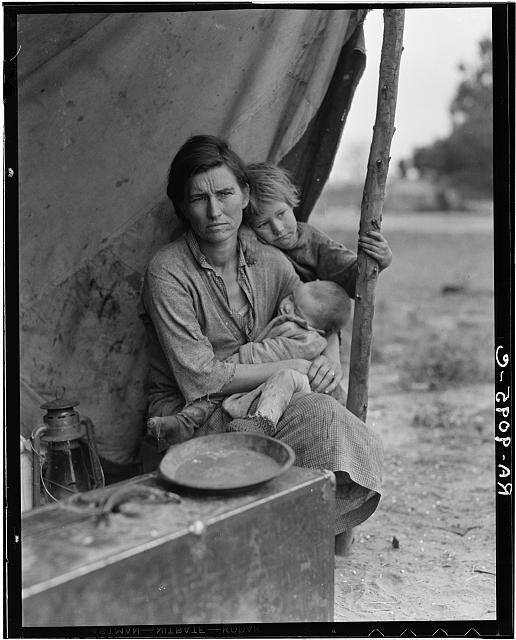Happy Mother’s Day!
 Photo: Migrant agricultural worker’s family. Seven children without food. Mother aged thirty-two. Father is a native Californian. Nipomo, California
Photo: Migrant agricultural worker’s family. Seven children without food. Mother aged thirty-two. Father is a native Californian. Nipomo, California
Taken by Dorothea Lange, Feb/Mar 1936
Library of Congress
Not the most famous of Lange’s photos, but one of the same subject. In another photo taken during this shoot, the mother shown here is nursing the baby she holds on her lap. How she produced any milk given their destitute circumstances is beyond me, but her haggard, aged-beyond-her-years appearance tells a lot.
Happy Mother’s Day, to mothers who survived these kinds of circumstances while birthing and raising children.
Happy Mother’s Day to mothers who are surviving under similar conditions today — like the two mothers who gave birth during the evacuation of Fort McMurray, to the myriad mothers who struggled ferrying their children from Syria and other war zones, to mothers who wonder where their children are and if they’ll ever see them again.
Happy Mother’s Day to mothers of invention and godmothers, and mothers in spirit though not by birth. The creative force isn’t limited by one’s body or economics.


My wife is the best mother. (As is every other mother.) For all those days I don’t let her know that, please know that today.
Lange’s “Migrant Mother” was Florenece Owens Thompson, nee’ Christie (September 1, 1903 – September 16, 1983). She had a bunch of husbands and a bunch of children, who must have loved her dearly.
.
Some lines from her Wiki page: https://en.m.wikipedia.org/wiki/Florence_Owens_Thompson
.
.
White folks naturally identify with Lange’s and Steinbeck’s victims of the Dust Bowl era and think “How did those poor people ever survive”? But, of course, for American blacks poverty, deprivation and back-breaking labor was not limited to an “era” — it was 20 generations.
.
Once while traveling in Texas I stopped and picked cotton for a (short) day for a charity just to see what it was like. Didn’t work. I came away from that day even less capable of comprehending what some people’s lives were like.
.
Did I say “were”?
Mother Nature == reproduction and organization == causality as one knows it.
Yay Mom!
Two notes:
One, thank you for the proper crediting of the photograph.
Two, for the ultimate Mother’s Day story might I suggest “The Glass Castle” by Jeanette Walls
Here’s an ode to Mom that always makes me rather emotional.
.
http://www.motivateus.com/stories/parable.htm
Really nice post, Rayne. I hope you had a wonderful day!